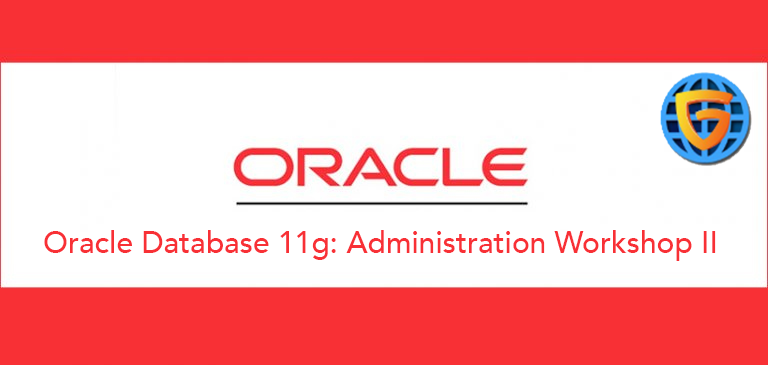Duration : 60Hours.
Certificate: Certificate of Participation on ‘’ Database 11g Administration’’
Oracle is an American Multinational Computer Technology corporation which sells software for
database administration and cloud engineered system. Larry Ellison co-founded Oracle Corporation in
1977 with Bob Miner and Ed Oates under the name Software Development Laboratories.
Basically from the term oracle we all know that it is related to database. We mainly used its database
software to maintain databases of a particular company or any organization. The way by which we
maintain database is by SQL statement and queries.

So it may comes to your mind that what is SQL. SQL which is the abbreviated form of Structured
Query Language is used to modify database, insert records into database, delete records and to update
the database according to the need. We have to use queries in SQL to perform all this task. SQL
queries are statements which are gets executed and perform the database operation.
There are mainly three version of oracle:
- Oracle 12c version 12.2.0.1
- Oracle 12c version 12.1.0.2
- Oracle 11g version 11.2.0.4
The Oracle Database 12c is a high-performance, enterprise-class database. According to Oracle, this
is the first database designed for the cloud. Oracle Database 12c also introduces 500 new features to
the database, most notably pluggable databases and multitenant architecture. Oracle 11g is the older
version of oracle RDBMS and has no pluggable database while oracle 12c is a newer version of oracle
designed for the cloud system and management of cloud and has pluggable databases.
1. # The Oracle Database Architecture: Overview
2. # ASM Storage Concepts
3. # Connecting to the Database and the ASM Instance
4. # DBA Tools Overview
1. # Purpose of Backup and Recovery (B&R), Typical Tasks and Terminology
2. # Using the Recovery Manager (RMAN)
3. # Configuring your Database for B&R Operations
4. # Configuring Archivelog Mode
5. # Configuring Backup Retention
6. # Configuring and Using a Flash Recovery Area (FRA)
1. # Tracking and Storing Backup Information
2. # Setting up a Recovery Catalog
3. # Recording Backups
4. # Using RMAN Stored Scripts
5. # Managing the Recovery Catalog (Backup, Export, Import, Upgrade, Drop and Virtual Private Catalog)
1. # Configuring and Managing Persistent Settings for RMAN
2. # Configuring Autobackup of Control File
3. # Backup optimization
4. # Advanced Configuration Settings: Compressing Backups
5. # Configuring Backup and Restore for Very Large Files (Multisection)
1. # RMAN backup types
2. # Creating and Using the following:
3. # Backup Sets and Image Copies
4. # Whole Database Backup
5. # Fast Incremental Backup
6. # Configure Backup Destinations
7. # Duplexed Backup Sets
8. # Archival Backups
1. # Restoring and Recovering
2. # Causes of File Loss
3. # Automatic Tempfile Recovery
4. # Recovering from the Loss of a Redo Log Group
5. # Recovering from a Lost Index Tablespace
6. # Re-creating a Password Authentication File
7. # Complete and Incomplete Recovery
8. # Other Recovery Operations
1. # Complete Recovery after Loss of a Critical or Noncritical Data File
2. # Recovering Image Copies and Switching Files
3. # Restore and Recovery of a Database in NOARCHIVELOG Mode
4. # Incomplete Recovery
5. # Performing Recovery with a Backup Control File
6. # Restoring from Autobackup: Server Parameter File and Control File
7. # Restoring and Recovering the Database on a New Host
1. # Monitoring RMAN Jobs
2. # Balance Between Speed of Backup Versus Speed of Recovery
3. # RMAN Multiplexing
4. # Synchronous and Asynchronous I/O
5. # Explaining Performance Impact of MAXPIECESIZE, FILESPERSET, MAXOPENFILES and BACKUP DURATION
1. # Data Recovery Advisor (DRA)
2. # Block Corruption
3. # Automatic Diagnostic Repository (ADR)
4. # Health Monitor
5. # The ADR Command-Line Tool, ADRCI
1. # Flashback Technology: Overview and Setup
2. # Using Flashback Technology to Query Data
3. # Flashback Table
4. # Flashback Transaction Query
5. # Performing Flashback Transaction Backout
1. # Oracle Total Recall
2. # Flashback Drop and the Recycle Bin
1. # Configuring Flashback Database
2. # Performing Flashback Database Operations
3. # Monitoring Flashback Database
1. # Oracle Memory Structures
2. # Oracle Database Memory Parameters
3. # Using Automatic Memory Management
4. # Automatic Shared Memory Management
5. # Using Memory Advisors
6. # Using Data Dictionary Views
1. # Tuning Activities
2. # Using Statistic Preferences
3. # Optimizer Statistics Collection
4. # Monitor the Performance of Sessions and Services
5. # Automatic Workload Repository (AWR)
6. # Describing the Benefits of Database Replay
1. # SQL Tuning and SQL Advisors
2. # Using SQL Tuning Advisor
3. # SQL Access Advisor
4. # SQL Performance Analyzer Overview
1. # Database Resource Manager: Overview and Concepts
2. # Accessing and Creating Resource Plans
3. # Creating Consumer Group
4. # Specifying Resource Plan Directives, including:
5. # Limiting CPU Utilization at the Database Level
6. # Instance Caging
7. # Activating a Resource Plan
8. # Monitoring the Resource Manager
1. # Simplifying Management Tasks
2. # Creating a Job, Program, and Schedule
3. # Using Time-Based, Event-Based, and Complex Schedules
4. # Describing the Use of Windows, Window Groups, Job Classes, and Consumer Groups
5. # Multi-Destination Jobs
1. # Free Space Management
2. # Monitoring Space
3. # Compressing Data
1. # Segment Creation on Demand
2. # Additional Automatic Space-Saving Functionalit
3. # Shrinking Segments
4. # Segment Advisor
5. # Managing Resumable Space Allocation
1. # Purpose and Methods of Cloning a Database
2. # Using RMAN to Create a Duplicate Database
3. # Cloning a Database from a Backup
4. # Duplicate a Database Based on a Running Instance